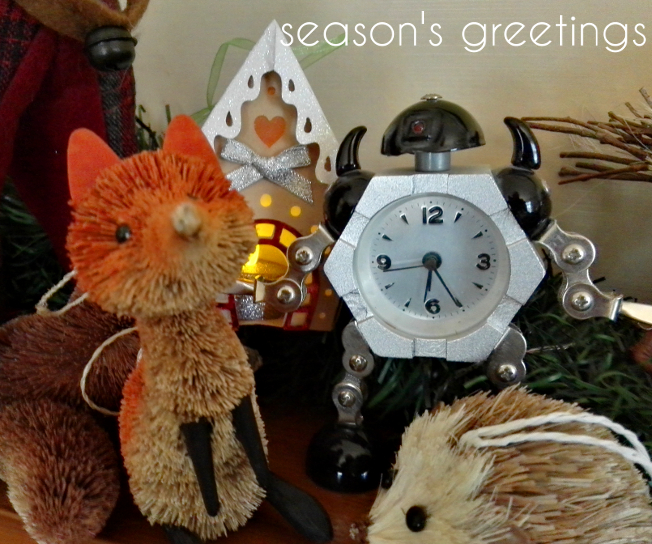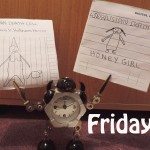For as long as I can remember, Christmas has always been commercialised, and there have always been people who complain about it, but I’m not one of them. That commercialisation might have noticeably accelerated, even in the five years since I wrote the article below, but so has the commercialisation of everything else. Whereas probably my favourite traditional British celebration, Bonfire Night, has withered away thanks mainly to the fact that its most marketable feature – fireworks – have not unreasonably become harder to buy and sell, Halloween, which is infinitely marketable, has grown exponentially. But although it’s a far bigger deal – what advertisers have started to refer to as “Halloween Season” – it feels oddly diminished in spirit. That said, I doubt if children now would prefer it to go back to being just a fun night for kids to carve turnips (which now seems hilarious even though I still think turnips are more entertaining and creepy as lanterns) wear crappy home-made costumes and “entertain” strangers to get sweets or (if you were very lucky) money. Far more aggravating is the purely commercial event ‘Black Friday,’ which has no business existing outside of the USA where it’s tied to Thanksgiving, but inevitably arrived here and this year, for the first time (that I’ve noticed) was referred to on TV adverts as “Black Friday season.” That doesn’t even make sense. Ah well. On to Christmas, and the year that I had broken my leg in November.
It’s mid-December as I write this and the farmyards, the stately homes and recently converted stable blocks and steadings of rural Fife are aglow with rustic Christmas ‘Fayres’. Leaving aside the fact that I’m clattering around the cobblestones on crutches, what could be more festive and redolent of Christmas past than the twinkling lights, the smell of trees, the mulled apple juice and stalls selling home baking, handmade decorations, crafts of all varieties? Sitting on a low straw bale – you forget how hard straw is – in the corner of a huge barn, next to an old cable reel (now a makeshift table), it’s easy to forget that this is – to me at least – all relatively new. It feels both very archaic and very now.
Ancient barn walls, lumpy and whitewashed and high above, a new corrugated iron roof, halogen strip lights glowing far more brightly than the dreich pewtery daylight that gleams in the small inset windows overhead. In the barn, a kind of fantasy village square has been erected in four aisles; stalls with red and white striped awnings and, in the main thoroughfare, a huge Christmas tree, wide, dark and feathery in its own little low-fenced enclosure, pulling the huge space in towards itself with outstretched maypole-like tendrils of tinsel, braided with fairy lights, a benign still centre around which a river of human traffic flows noisily.

Woodcrafts, papercrafts, ceramics, chocolate, textiles – this is a handmade version of Christmas that feels traditional and olde worlde (cinnamon and orange slices floating in the apple juice; carol singers rising above the sound of the generators) while also being extremely fashionable and 21st century. It’s a secular Christmas, albeit one that is characterised by both pagan and Christian accoutrements. This Christmas is genuinely welcoming to all, which is I suppose the ‘real meaning’ if there has to be one; really, sharing Christmas with everyone else is the least the little baby Jesus can do for hijacking a pagan winter festival.
Technically there is commerce here as everywhere else, but the tupperware tubs of coins and the brown paper bags and recycled, hand-stamped business cards hardly feel ‘commercialised’ in the He-Man and Transformers sense of the childhood Christmases that I remember (or indeed in the sense of the relentless “Christmas adverts” which unbelievably but cleverly, seem to be a talking point in themselves now. With typical irony, the Christmas industry (I think it can safely be called that) favours the same pre-industrial image of the festival that these self-consciously rustic fayres try to embody). It’s all very twee and, to reinforce that tweeness, I’ll say it’s kind of an upcycled (eye roll) memory of Christmas that almost certainly doesn’t bear much resemblance to anything that the stallholders and organisers at the fayres remember, let alone the executives from John Lewis and Tesco and Lidl. In fact, if anything, it feels like an attempt to create Christmas as it has been depicted in cards and calendars since time immemorial.*
But, as willed and artificial as all this seems, it will one day be the (or at least a) genuine memory of childhood Christmases for all of these kids who are roaming around looking at their phones in the draughty barns and muddy farmyards, looking bored (teens), excited (toddlers) or vaguely bemused and drinking their hot chocolate – and that’s kind of nice.
* that is, the late 19th century







